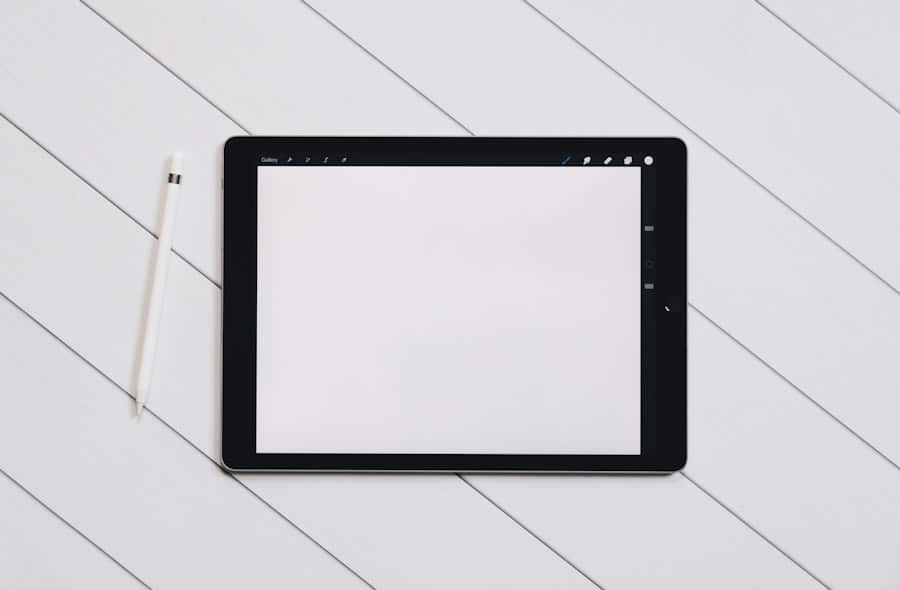In the evolving landscape of remote work, digital whiteboards have emerged as essential tools that facilitate collaboration and creativity among distributed teams. These virtual canvases allow team members to brainstorm, visualize ideas, and organize thoughts in real-time, regardless of their physical locations. The shift towards remote work has necessitated innovative solutions that can replicate the interactive experience of in-person meetings, and digital whiteboards have risen to meet this challenge.
The significance of digital whiteboards extends beyond mere functionality; they embody a shift in how teams approach problem-solving and project management. With features that support multimedia integration, real-time collaboration, and intuitive design, these platforms cater to diverse working styles and preferences.
As organizations increasingly adopt hybrid work models, the ability to seamlessly share ideas and collaborate visually becomes paramount. Digital whiteboards not only serve as a space for brainstorming but also as a repository for ongoing projects, making them invaluable for remote teams striving for efficiency and innovation.
Key Takeaways
- Digital whiteboards are essential tools for remote teams to collaborate and communicate effectively.
- When choosing a digital whiteboard, consider features such as real-time collaboration, integration with other tools, user interface, security, and cost.
- Top digital whiteboards offer various collaboration tools such as video conferencing, chat, and file sharing to enhance remote team productivity.
- Integration with other tools like project management software, cloud storage, and communication platforms is crucial for seamless workflow.
- User interface and ease of use are important factors to consider when selecting a digital whiteboard for remote teams, as they impact user adoption and productivity.
Features to Consider When Choosing a Digital Whiteboard
When selecting a digital whiteboard for remote collaboration, several key features should be taken into account to ensure it meets the specific needs of the team. One of the most critical aspects is real-time collaboration capabilities. This feature allows multiple users to interact with the board simultaneously, making it possible for teams to brainstorm ideas, edit content, and provide feedback instantaneously.
The ability to see changes as they happen fosters a dynamic environment where creativity can flourish, and decisions can be made more swiftly. Another important feature is the variety of tools available for content creation and manipulation. A robust digital whiteboard should offer a range of drawing tools, text options, sticky notes, and the ability to import images or documents.
This versatility enables users to express their ideas in multiple formats, catering to different learning styles and preferences. Additionally, features such as templates for specific tasks—like project planning or mind mapping—can streamline the process and help teams stay organized. The inclusion of features that support multimedia elements, such as video or audio integration, can further enhance the collaborative experience by allowing teams to incorporate diverse content types into their discussions.
Comparison of Top Digital Whiteboards in Terms of Collaboration Tools
When evaluating digital whiteboards, one of the primary considerations is the suite of collaboration tools they offer. For instance, Miro stands out with its extensive toolkit designed specifically for collaborative brainstorming sessions. It provides features like voting stickers, timers for time-boxed discussions, and the ability to create user-defined templates that can be reused across projects.
These tools not only enhance engagement but also help maintain focus during collaborative sessions. On the other hand, Microsoft Whiteboard integrates seamlessly with other Microsoft 365 applications, making it an attractive option for teams already using this ecosystem. Its collaboration features include real-time cursors that allow users to see where others are working on the board, as well as a chat function that enables quick communication without leaving the workspace.
This integration fosters a cohesive workflow where team members can easily transition between brainstorming on the whiteboard and discussing ideas in Microsoft Teams or Outlook.
Comparison of Top Digital Whiteboards in Terms of Integration with Other Tools
Integration capabilities are crucial when selecting a digital whiteboard, as they determine how well the tool fits into an existing tech stack. For example, Trello’s integration with Miro allows users to create visual boards directly from Trello cards, streamlining project management processes. This capability is particularly beneficial for teams that rely heavily on task management software, as it enables them to visualize their workflows without switching between applications.
Similarly, Lucidspark offers robust integration with Google Workspace, allowing users to import Google Docs or Sheets directly into their boards. This feature is invaluable for teams that utilize Google’s suite of productivity tools, as it simplifies the process of incorporating existing documents into brainstorming sessions. The ability to link various tools not only enhances productivity but also ensures that all team members have access to the same resources during collaborative efforts.
Comparison of Top Digital Whiteboards in Terms of User Interface and Ease of Use
The user interface (UI) and overall ease of use are critical factors that can significantly impact a team’s adoption of a digital whiteboard. A clean and intuitive UI can reduce the learning curve associated with new software, allowing teams to focus on collaboration rather than navigating complex features. For instance, Miro is often praised for its user-friendly interface that allows users to drag and drop elements easily onto the canvas.
Its layout is designed to be intuitive, making it accessible even for those who may not be tech-savvy. In contrast, Microsoft Whiteboard offers a familiar interface for users accustomed to other Microsoft products. The integration of familiar icons and functionalities helps users transition smoothly into using the whiteboard without feeling overwhelmed by new tools.
This familiarity can enhance user confidence and encourage more active participation during collaborative sessions. Ultimately, a well-designed UI not only improves user satisfaction but also promotes more effective collaboration by minimizing distractions.
Comparison of Top Digital Whiteboards in Terms of Security and Privacy
As remote teams increasingly rely on digital whiteboards for sensitive discussions and project planning, security and privacy features become paramount considerations. Tools like Miro prioritize data protection by offering enterprise-grade security measures such as end-to-end encryption and compliance with international standards like GDPR. These features ensure that sensitive information shared on the platform remains confidential and secure from unauthorized access.
On the other hand, Microsoft Whiteboard benefits from Microsoft’s extensive security infrastructure. With built-in compliance features that align with various regulatory requirements, organizations can trust that their data is protected within the Microsoft ecosystem.
This level of control is essential for organizations that handle sensitive information or operate in regulated industries.
Cost Comparison of Top Digital Whiteboards
Cost is often a decisive factor when choosing a digital whiteboard for remote teams. Many platforms offer tiered pricing models based on features and user capacity. For instance, Miro provides a free version with limited functionalities suitable for small teams or individual users but requires a subscription for access to advanced features like integrations and larger board sizes.
Their pricing structure is designed to accommodate various team sizes and budgets while offering scalability as organizations grow. Conversely, Microsoft Whiteboard is included at no additional cost for users with a Microsoft 365 subscription, making it an attractive option for organizations already invested in this ecosystem. This integration means that teams can leverage powerful collaboration tools without incurring extra expenses.
However, organizations must consider whether they are utilizing other Microsoft services effectively to maximize their investment in this platform.
Conclusion and Recommendations for Remote Teams
In navigating the myriad options available in the realm of digital whiteboards, remote teams must carefully assess their unique needs and workflows before making a decision. The ideal choice will depend on factors such as collaboration requirements, integration with existing tools, user interface preferences, security considerations, and budget constraints. For teams heavily invested in Microsoft products, Microsoft Whiteboard may offer seamless integration and cost-effectiveness.
In contrast, those seeking extensive collaboration features might find Miro more aligned with their goals. Ultimately, the right digital whiteboard can significantly enhance remote collaboration by providing a space where ideas can be freely exchanged and developed into actionable plans. By prioritizing features that align with their specific needs, remote teams can foster an environment of creativity and productivity that transcends geographical boundaries.
If you are interested in unlocking your potential with the latest technology, you may want to check out the article Unlock Your Potential with the Samsung Galaxy Book2 Pro. This article provides valuable insights into how this cutting-edge device can enhance your productivity and efficiency. Just like choosing the right digital whiteboard for remote teams is crucial for collaboration, selecting the right technology tools can make a significant difference in achieving your goals.
FAQs
What are digital whiteboards for remote teams?
Digital whiteboards for remote teams are online collaboration tools that allow team members to work together on a virtual whiteboard in real-time, regardless of their physical location. These tools often include features such as drawing, writing, sticky notes, and the ability to import and export files.
What are the benefits of using digital whiteboards for remote teams?
Using digital whiteboards for remote teams can help improve communication, collaboration, and productivity. It allows team members to brainstorm, share ideas, and work on projects together in a visual and interactive way, even when they are not in the same physical location.
What are some key features to look for in digital whiteboards for remote teams?
Some key features to look for in digital whiteboards for remote teams include real-time collaboration, easy-to-use interface, integration with other tools (such as video conferencing and project management software), customizable templates, and the ability to save and export work.
What are some popular digital whiteboard tools for remote teams?
Some popular digital whiteboard tools for remote teams include Miro, Microsoft Whiteboard, Google Jamboard, and Ziteboard. Each of these tools offers unique features and capabilities to support remote team collaboration.
How do digital whiteboards for remote teams compare in terms of pricing and features?
The pricing and features of digital whiteboards for remote teams can vary widely. Some tools offer free versions with limited features, while others require a subscription for full access to all features. It’s important to compare the pricing and features of different tools to find the best fit for your team’s needs and budget.



